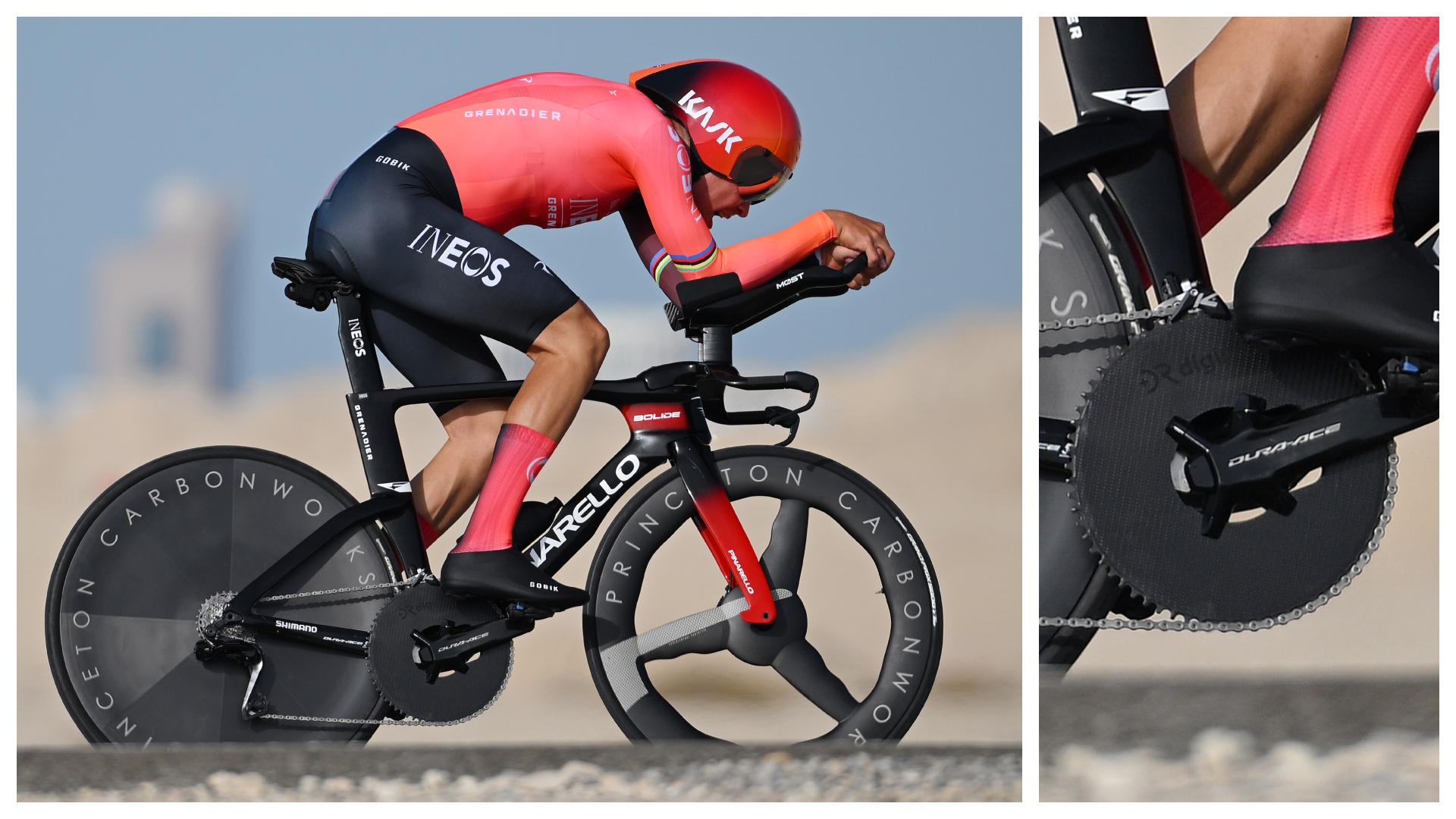
A few years back I went for a ride with former pro Sean Yates. It was a ride notable for the unceasing rain, and for a voice in my head telling me that if you’re riding with a top-10 Paris-Roubaix finisher, you don’t complain about the rain.
On a smallish, steepish hill, he dropped to the small chainring. This surprised me; not a fortnight earlier I’d read that Sean had never used the small chainring in the UK, because the hills weren’t big enough.
"Small chainring, Sean?" I asked.
"Yes," he said.
"I thought you didn’t use that in the UK?"
"It’s a 52."
Sean’s small chainring was, indeed, a 52 tooth. His big one was something like a 58t. I don’t really know why he was running this set up on his winter bike, and I didn’t ask, because I felt as small as my teeny-tiny 39t.
I have told this story many, many times since. Invariably it’s greeted with a gasp. A 52-tooth chainring… on the inside?
It’s true that since the dawn of time, a measure of a bike rider has been the size of their chainring. We’ve called them "dinner plates", we’ve called them "windmills". Hence, when Tobias Foss rolled into time trial action at the Tour of UAE last month armed with a 68t, the internet of cyclists went very gooey indeed [Cycling Weekly, of course, was quick to point out the basic maths - Ed].
It wasn’t just that [the internet moves on quickly and Foss' chainring has now been superseded by that Giro helmet, and a raging debate about hookless rims -Ed]. A few days earlier I saw a time trial televised with on-screen graphics that showed how big everyone’s chainring was. The commentator told us that the winner had won because he had the biggest chainring.
Before we lose our collective minds, a little maths. The size of your chainring makes less difference than you think to the actual gear ratio. Yes, I know, this is going to be boring, but it will give you the tools to bore others in your turn, and together we can make a febrile world a little calmer.
If you had a fairly stock 52t chainring, and you exchanged it for a 60t, your gear ratio would increase by the equivalent of about two sprocket teeth. Now, on the club run, if you clunk a couple of sprockets further out the cassette, do people immediately celebrate your athleticism? They do not. Even the Foss-monster’s mighty 68t only shifts between three and four sprocket teeth, depending a little what gear you started in.
The best technical justification for the big ring is a small gain in mechanical efficiency – running the chain around bigger corners in the drive train reduces the friction losses. So that guy with the big ring? He’s actually trying to make life easier for himself, the slacker.
It interested me that at the last Olympics the GB team ran chains with 10 mm pitch rather than conventional 12.7 mm, leaving the teeth on the chainring closer together. This meant that a 70t chainring was about the same size as a 55t. They ran some very big chainrings – there were reports of 90t rings in use – but no one really cared because the diameter of the ring was moderate. We don’t want clever, we want big.
And another contradiction; on a mountain stage, we want to see big sprockets. There, we don’t want to imagine huge power and strength from riders, we want to imagine kitteny weakness. The only thing we find more exciting than a good bike rider is a really steep hill.
In the end, chainring size is almost irrelevant – what matters is gear size and cadence, which is a more complicated bit of maths than looking at a big ring. Happily there is a metric that measures the combined effect of these two elements, and means you don’t need to do the calculations. And that is speed.
I know. How old fashioned.







